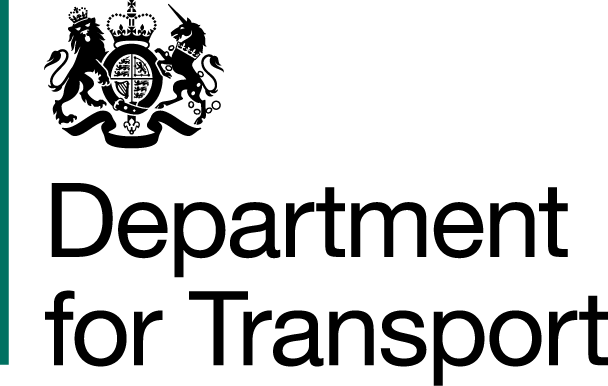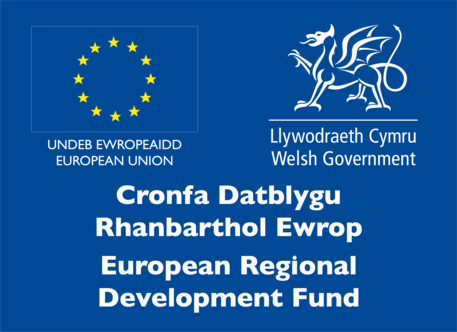Our railways run through cities, towns and countryside across Wales and we share our tracks with a diverse array of wildlife and plants.
Our work delivering the greener, more efficient South Wales Metro requires us to strike a balance between respecting the natural environment and helping it flourish, as well as carrying out the essential work to deliver this transformative project.
The South Wales Metro
The South Wales Metro project is the biggest upgrade to transport in Wales for generations. It’s a multi-million pound project which will see 170km of tracks electrified, £800m spent on new electric tram trains, upgrades to stations and signaling across as well as the construction of at least five new stations.
To achieve this, we’ll need to do a lot of work around the railways, including cutting back vegetation so our services can run safely and installing new Overhead Line Equipment (OLE) to power Metro.
As a public body in Wales, all of our work is done in consideration of the Future Generations Act (2015). Part of this means we have a legal obligation to improve our environmental well-being. Everything we do is in accordance with the Act – from replanting trees to carrying out vegetation management works during the times when its least harmful to wildlife.
What environmental benefits will Metro have?
The South Wales Metro will bring a host of environmental benefits to the Cardiff Capital Region.
We're spending £800m replacing the old, diesel-powered Pacer trains which serve the Core Valleys Lines with brand-new tram-trains. They are quieter and produce far less CO2 than the outgoing trains.
Better, more reliable public transport will also mean that less people will have to use their cars, easing the strain on the congested roads around the Cardiff Capital Region.
We're also making our stations more environmentally friendly. We’ll be installing bat and bird boxes as well as green roofs and walls.
We're also improving active travel routes, such as footpaths and cycle-ways throughout our network so you'll see more planting on these routes.
What is Vegetation management?
Vegetation management is essentially when we manage any vegetation on our land assets. We do this for a variety of reasons, including health and safety. Management could include removal, pruning, replanting, creation, enhancement and invasive species control in a variety of habitats such as trees, scrub and grassland.
Why are we removing vegetation near the railways?
We’re electrifying the rail network in the South East Wales valleys, therefore vegetation management in this area, known as the Core Valleys Lines or CVL is an essential part of this to allow us to facilitate this work.
In addition, vegetation near the railway can also be a hazard to staff and passenger health and safety a tree falling across the track could result in a severe accident such as a derailment. We’ll also be undertaking routine management of unsafe vegetation – such as removing dead, dying or diseased trees, cutting back vegetation which is too close to the line and removal of tree species whose leaves cause low adhesion to the tracks. Historic shortfalls of vegetation maintenance on the Core Valleys Lines means were seeing big changes on our railway; with more vegetation being removed in some areas than has been for many years.
N.B. outside the Core Valleys Lines vegetation maintenance is carried out by Network Rail.
What’s the process of vegetation management? What happens before we remove any vegetation?
We have a series of set survey methodologies, standards and protocols which are undertaken collectively in advance, immediately before and during works to identify areas requiring management, to make sure what needs to be removed is, and what doesn’t need to be is left. This includes ecological surveys before and during works to make sure any wildlife impacts are avoided and minimised during works.
We hear a lot about invasive species. What are/do we mean by invasive species?
An invasive species is an introduced, non-native plant or animal that has been introduced (either deliberately or accidently) by human activity and has the potential to cause harm to the environment, the economy, and/or to human health. Japanese knotweed for example is able to spread rapidly and become dominant in our ecosystems, causing negative effects on native species and habitats.
What will we be doing after energisation?
In terms of wildlife, we’ll be investigating all options for biodiversity enhancement on the CVL after line energisation; including a full review of our lineside assets and what/where we can maximise wildlife benefits. This will include habitat creation and habitat enhancement; where appropriate. This will create better, bigger, more robust and connected habitats for native wildlife and introduce new life alongside our railway network.
Why are you cutting down trees outside my house?
We’re electrifying the rail network in the South East Wales Valleys. Vegetation near the railway can be a hazard to our staff and passenger health and safety. Vegetation management along the Core Valleys Lines is an essential part of electrification, also to make the railway, safer, more reliable, and more adaptable to future climate change challenges. Historic shortfalls of line maintenance means we’re seeing big changes on our railway currently; including more vegetation being removed than has been for many years.
Won’t there be a loss of local wildlife? How are you making sure it’s protected?
Ecological surveys and impact assessments have been undertaken prior to works so that we can understand the impacts of this work, and if/where/what mitigation is required. We implement a range of measures to protect wildlife during and following works - this includes, where required, securing relevant licences from Natural Resources Wales (NRW) to work in areas with protected species, undertaking ecological pre-checks and supervision (for example, for nesting birds), biosecurity measures to prevent invasive species spread and long-term mitigation for species such as bats, where we are creating and enhancing additional areas of habitat.
What about nesting birds?
We do our best to minimise vegetation works during the nesting season. If works do need to take place, we follow an agreed process to ensure there are no impacts on nesting birds.
We’ll thoroughly check the surrounding area before removing any vegetation, including at ground level, to identify any active nests, chicks or nesting birds that may be present.
If we find any signs of nesting, we’ll create a ‘safe zone’ around the area with hazard tape or markers. This remains in place until all the chicks have flown the nest and an ecologist has confirmed it's safe to proceed.
It's important to note that an ecologist may not always be present on-site, especially if the habitats in question are deemed unsuitable, or if the works that may affect the birds have already been completed or checked.
When do vegetation works take place? Why do you work at night?
Our team’s working times can vary across the network, what’s most important to us is that we’re able to work safely. Sometimes this can mean working at night, on weekends or when lines are closed and trains are not running. If our teams are working at night, they’ll do their best to use the minimum lighting needed so the works can be completed safely and that any artificial lighting will only be used when needed.
We’ll do our best to make sure any lights are directed away from residents’ homes on our work boundaries and avoid light spills into habitat areas that are sensitive to the impacts of lighting.
What about the noise?
Work on the railway is often noisy and late at night. As well as our enhancement projects, we maintain the railway 24/7 and sometimes must work at short notice for safety reasons. While we do our best to keep noise and disruption to a minimum, we understand that it can be disruptive.
We ask our teams to make sure that any noisy equipment is not left idle, so that they’re only working when necessary and we’re using electric tools on the network where we can, which are less noisy. Our teams are also asked to keep noise to a minimum, to be respectful to residents near their working sites and to communicate sensitively.
Our stakeholder teams will write to you in advance if there are any particularly noisy planned works in your area.
We’re in a climate emergency, surely cutting down trees isn’t helping?
We will be developing a vegetation management plan for the Core Valley Lines as part of our climate change adaptation and resilience strategy. The plan will seek to ensure that we maintain vegetation in places (where appropriate) to increase the resilience of our assets (such as earthworks), provide shade in hot temperatures and slow down rainfall and water run off - this will have to be balanced with ensuring trackside vegetation is managed to maintain safety. We will also be reviewing any new planting in relation to climate change - some species for example will be more tolerant of extreme winds and temperature changes and as such could be more suitable on trackside locations.
Why can’t you re-plant trees now?
We need to undertake these essential maintenance and energisation works first. Once this is completed, we’ll be able to fully understand and assess all available options for biodiversity enhancement on the CVL after line energisation. This includes habitat creation and habitat enhancement; where appropriate. Tree planting won’t necessarily be the best option for wildlife in some areas. This will create better, bigger, more connected habitats for native wildlife and introduce new life alongside our railway network.
Will you plant trees to screen overhead equipment or exposed assets?
No, we won't be replanting trees solely for the purposes of screening.
What will you be planting, and where?
This will be determined on a case-by-case basis as to what is most suitable in the local area in terms of benefitting biodiversity and climate change adaptation, whilst also balancing health and safety requirements. For example, in some areas low growing shrub or grassland vegetation may offer greater wildlife benefits compared to replanting individual trees.
We have complaints sometimes regarding pests in areas where we are working, what should people do if they see a rat?
Rats are extremely common and widespread, now that more people are working from home its likely you may see a rat in your garden where you may have not noticed it before. In addition, disturbance from works may temporarily displace rats in the local area. If you are concerned about any pests on your property please call your local authority environmental health team, the number will be on their website.
We have also had complaints about visible litter due to vegetation clearance - how are we managing this?
As we are clearing the vegetation particularly around stations and verges we are noticing it is uncovering litter that has been blown or thrown into the overgrowth. This litter will be cleared away though it may take a few months after the de-veg process as we report the litter to cleaning teams or to Network Rail, if you are concerned about litter you can report it to Network Rail on their website. Please don’t try to access any land around the station for litter picking yourself.
If you are interested in helping to keep our stations looking tidy and taking part in our community projects you can apply to be a station adopter on the Transport for Wales Website or get in touch with one of our friendly adopters groups via our Community Rail Team.
What about pollution during works?
We have a range of measures in place to prevent pollution during works from things like dust, noise and chemical run off. This includes using solar generators to reduce noise and fumes, fixed numbers of plant that are in operation at any time, avoiding night works whenever possible, using appropriate tool filters, using hand tools where possible to reduce noise, and always having spill kits on hand.




